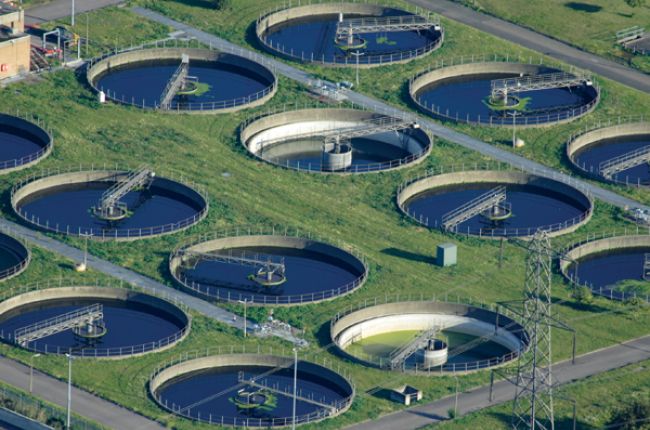Reliable Waste Water Treatment Solutions: Trick Techniques and Advantages
Reliable Waste Water Treatment Solutions: Trick Techniques and Advantages
Blog Article
Strategic Approaches to Boost Drainage Treatment Performance and Reduce Environmental Impact
In the realm of waste water therapy, the mission for improved performance and lowered ecological impact is a perpetual difficulty that requires strategic solutions. As society comes to grips with the essential to handle water resources sustainably, a nuanced technique ends up being essential. The integration of advanced treatment technologies, energy-efficient processes, resource recovery strategies, enhanced nutrient elimination strategies, and clever monitoring and control systems represents a multifaceted framework for attending to these pushing worries. What lies at the core of this complicated internet of techniques is the prospective to change the means we approach waste water therapy, not simply as a procedure of disposal, yet as a valuable chance for advancement and ecological stewardship.
Advanced Treatment Technologies
Advanced membrane layer filtration systems have actually revolutionized sophisticated wastewater treatment processes, dramatically enhancing the elimination of impurities. This technology has actually confirmed to be very effective in getting rid of a vast array of pollutants, including pharmaceuticals, heavy steels, and natural substances, which are usually testing to remove with typical therapy techniques.
Additionally, membrane filtering systems provide various advantages over conventional treatment approaches. They require much less room, create higher-quality effluent, and are a lot more resistant to fluctuations in influent water quality. Additionally, these systems are very functional and can be quickly integrated right into existing therapy plants or used as standalone units for decentralized applications. As the need for clean water continues to climb, the fostering of sophisticated membrane purification modern technologies is vital to make certain reliable and lasting wastewater treatment techniques.
Energy-Efficient Processes
The combination of energy-efficient procedures in wastewater treatment systems is critical for enhancing resource utilization and lowering functional costs. By implementing energy-efficient modern technologies, therapy plants can considerably decrease their carbon impact and overall environmental influence. One crucial approach to boosting energy performance in wastewater treatment is the utilization of sophisticated oygenation systems, such as fine bubble diffusers or surface area aerators, which can improve oxygen transfer effectiveness and lower energy usage. Additionally, integrating power healing systems, like anaerobic food digestion for biogas production or making use of excess warm for thermal procedures, can help counter energy demands and advertise sustainability.
Furthermore, optimizing process control and automation with using advanced sensors and monitoring systems can enhance general energy effectiveness by changing procedures in real-time based upon actual need and conditions. Carrying out power audits and frequently keeping an eye on power performance indications are vital techniques to identify areas for renovation and track energy-saving efforts properly. On the whole, the adoption of energy-efficient processes in wastewater treatment not only benefits the atmosphere yet also contributes to lasting cost savings and functional sustainability.
Resource Recuperation Techniques
With a concentrate on maximizing resource usage and sustainability in wastewater treatment systems, the application of source recuperation techniques becomes a crucial aspect in improving functional performance. Resource healing methods in wastewater therapy involve the recognition and removal of important sources from the waste stream, therefore turning what was once thought about waste right into an important property. By applying resource healing techniques such as nutrient elimination and healing, power generation from raw material, and the manufacturing of recyclable water, wastewater treatment plants can reduce ecological impact while taking full advantage of performance.

Enhanced Nutrient Removal Strategies
Executing advanced nutrient removal methods is important for maximizing the effectiveness of wastewater therapy systems. One of the essential techniques used for boosted nutrient removal is the process of biological nutrient elimination (BNR), which entails the elimination of nitrogen and phosphorus via organic processes.

In addition to BNR, advanced treatment methods such as membrane layer bioreactors (MBRs) and constructed wetlands can also be employed to enhance nutrient elimination performance. By including these innovative nutrient elimination methods into wastewater treatment municipalities, systems and sectors can effectively reduce nutrient pollution and safeguard the atmosphere.
Smart Tracking and Control Solution
Using innovative technology, the combination of wise tracking and control systems reinvents the functional effectiveness of wastewater therapy centers. These systems integrate innovative sensing units and information analytics to continually check key specifications such as pH degrees, turbidity, dissolved oxygen, and flow prices in real-time. By accumulating and evaluating this data, operators can acquire valuable insights into the efficiency of the treatment procedures, allowing proactive changes to optimize therapy efficiency.
Smart surveillance and control systems likewise support remote tracking capabilities, allowing drivers to gain access to real-time data and control features from off-site places. This remote availability improves functional versatility and responsiveness, see it here enabling speedy interventions in instance of system malfunctions or variations in influent high quality. The predictive maintenance abilities of these systems aid prevent devices failings and decrease downtime, ultimately improving the general integrity of wastewater therapy operations.
Final Thought
Finally, tactical techniques such as innovative therapy technologies, energy-efficient processes, resource recovery methods, improved nutrient elimination strategies, and clever monitoring and control systems play a critical duty in enhancing wastewater therapy efficiency and minimizing environmental impact. By implementing these techniques, wastewater treatment plants can improve their overall performance, reduce energy consumption, recoup beneficial sources, and make certain conformity with ecological guidelines. These strategies are essential for effective and sustainable wastewater administration methods.

In final thought, More Help strategic techniques such as advanced treatment technologies, energy-efficient processes, source recovery methods, enhanced nutrient elimination methods, and clever monitoring and control systems play an essential role in boosting wastewater treatment efficiency and decreasing ecological effect.
Report this page